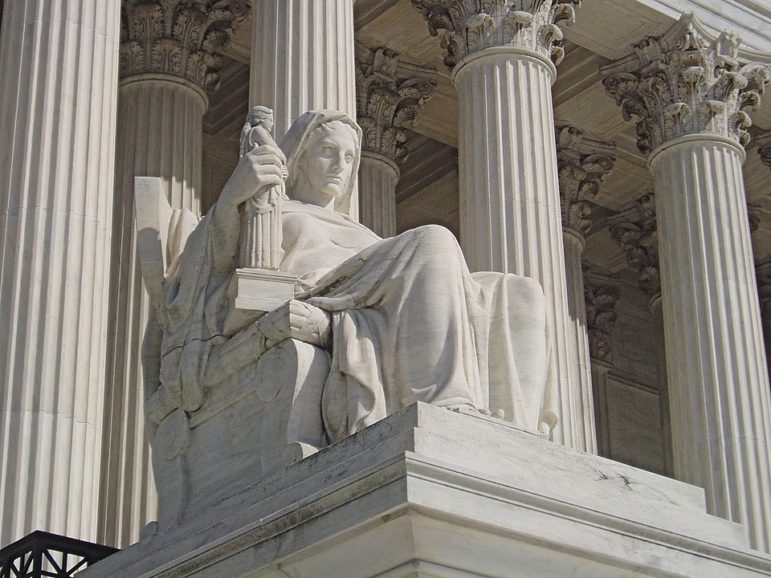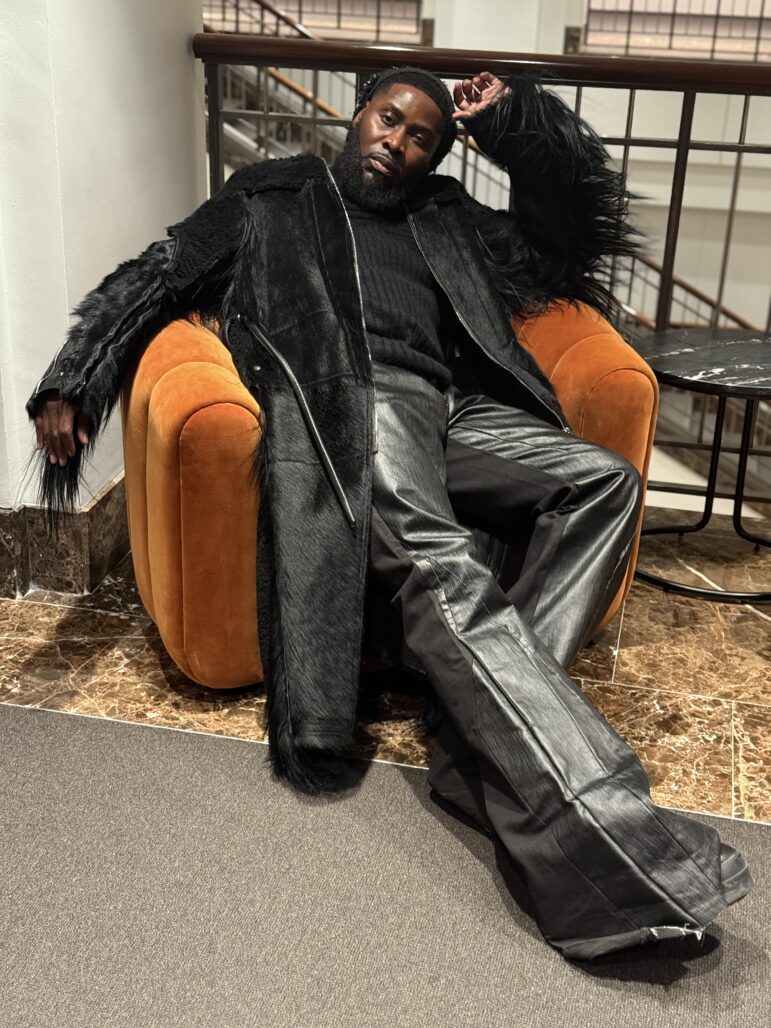
CC-BY-SA-3.0/Matt H. Wade at Wikipedia
The Contemplation of Justice, which sits on the west side of the United States Supreme Court building.We teach in the Immigrant and Non-Citizen Rights Clinic at CUNY Law School, a part of the nation’s largest and most diverse public university systems which has long been a bedrock for social mobility, with a storied history of producing radical thinkers. In the last few months we have seen our students nurse family members and themselves back to health, many still suffering from the myriad of COVID aftereffects. Many of our students have systematically organized, filling the streets of New York to protest, observe, witness and combat anti-Blackness and fatal policing practices. Still others have joined movements from their homes for an anti-racist reimagination of law enforcement, civil society, schools, workplaces and even their own families.
It is no surprise that CUNY students and alum have borne the brunt of structural inequities: seeing family members denied access to equal healthcare, overcoming elitist and racist hiring practices, and being subject to fatal policing in their neighborhoods, all whilst overcoming to change the face of New York and the world. Our community has lost 39 lives to COVID-19—more than any other university system in the country. It is with this backdrop that we joined our beloved community in a collective exhale when the Supreme Court temporarily stopped the Trump administration’s rescinding of DACA earlier this month, granting a temporary respite to many of our students and community members.
But the celebration didn’t last very long.
First, the SCOTUS decision on DACA is a continuation of the uncertainty individuals with DACA and others with vulnerable or no status have lived under for so long, letting the program live on until the administration finds a “legal” way to dismantle it. For an administration plowing ahead to destabilize immigrant communities—from rescinding asylum protections, threatening work visas and family-based immigration, to caging babies—it’s not an “if” but “when” it will next attempt to revoke DACA—and now SCOTUS has essentially given the administration the roadmap. The highest court in the land was clear, it would not comment on the soundness of the decision to take away DACA and, with it, the protection of approximately 700,000 young aspiring Americans who rely on the program. Rather, the Supreme Court only critiqued the manner in which DACA had been rescinded. In a reverberation of the Muslim Ban decision, all but Justice Sotomayor found that the executive’s racial animus was in no way related to the ending of DACA, giving a pass to the president for his slough of anti-Mexican statements before and during the administration’s attempts to end DACA.
In a country where immigration has turned into a political flashpoint, 74 percent of Americans support a legal pathway for undocumented individuals who came to this country as children. The decision puts into perspective that even DREAMers—a group of individuals who have been lauded by politicians from both parties—have had to fight tooth and nail for an iota of recognition and process. What does this mean for the millions of immigrants who don’t qualify for DACA? What about the DREAMer’s cousin who has a criminal arrest or mother who is undocumented?
In the two weeks since the decision, the administration has set other dangerous policies in motion. The D.C. Circuit has cleared the path for the expansion of speedy, error-prone deportations called “expedited removal.” Historically limited to areas within one-hundred miles from land borders, newly expanding policies allow the Department of Homeland Security to use speedy deportation practices to deport those encountered anywhere in the U.S. who can’t prove they have been in the U.S. for more than two years. Days after this expansion was approved by the D.C. Circuit Court of Appeals, the Supreme Court ruled that those subject to expedited removals will have limited constitutional rights and no habeas protection even while on U.S. soil. In dissent, Sotomayor points out that this decision disregards a century of precedent.
Together, the looming rescission of DACA, the expansion of fast-track deportation practices for people encountered anywhere in the U.S., and other threats to long-standing humanitarian protections such as Temporary Protected Status and Asylum, the landscape is devastating for our students who may be facing uncertain legal status themselves and/or have family similarly situated.
In practice, this means that more and more New Yorkers will be at risk of immigration enforcement through militarized ICE and CBP officers with expanding jurisdiction in the U.S. interior, and a DHS with expanding technological surveillance and tracking capabilities. For many CUNY students who have already suffered through an unprecedented public health crisis, racist and fatal policing policies, and a bleak economic outlook, this means that DHS agents may show up at their doorsteps and dorm rooms with ever-expanding tools for deportations. For our Black immigrant students, the intersection of racist policing, xenophobic immigration policies, and pervasive structural racism is a brick wall at every side. For these students, even a green card may not be ample protection from deportation due to the intertwined nature of over-aggressive policing and deportations.
Thus, as Americans slowly move from notions of reform to much-needed realities of defunding the police and abolition—platforms that organizers, activists and impacted populations have been systematically advocating for years—it is also the essential moment to rethink our immigration system. With all that CUNY has at stake in protecting our students and communities from a militarized immigration enforcement apparatus we and our students are well positioned to be at the helm of this discussion.
Though recent DACA victories give hope, we need to protect all immigrant CUNY students, especially the marginalized of the marginalized, those with criminal contacts, those who are Black, Indigenous and Trans, and those who have been long subject to policing in the name of “national security” and “public safety.” CUNY DACA activists have long taught us that they won’t rest until they see stability and human rights protection for all who migrate to our shores.
Whether acknowledged by the SCOTUS opinions of the last weeks or not, the history and present of our immigration system has been marred by race-based exclusions. As past and current movements to protect Black lives have reiterated time and time again, the time is long overdue to reconceive our carceral state. Inspired by these calls, we must renew efforts to #AbolishICE and to begin dismantling the current immigration system. And, just as important, the moment cries out for reimagining and rebuilding a migration system that is inclusive of all and not just a select few.
Let us move to finally realize the ideals of equality and justice touted in our nation’s founding document for all living in its borders. Our students and our NY immigrant communities deserve no less.
Nermeen Arastu (@nermeensaba) and Talia Peleg are associate professors in the Immigrant and Non-Citizen Rights Clinic at the CUNY School of Law.








